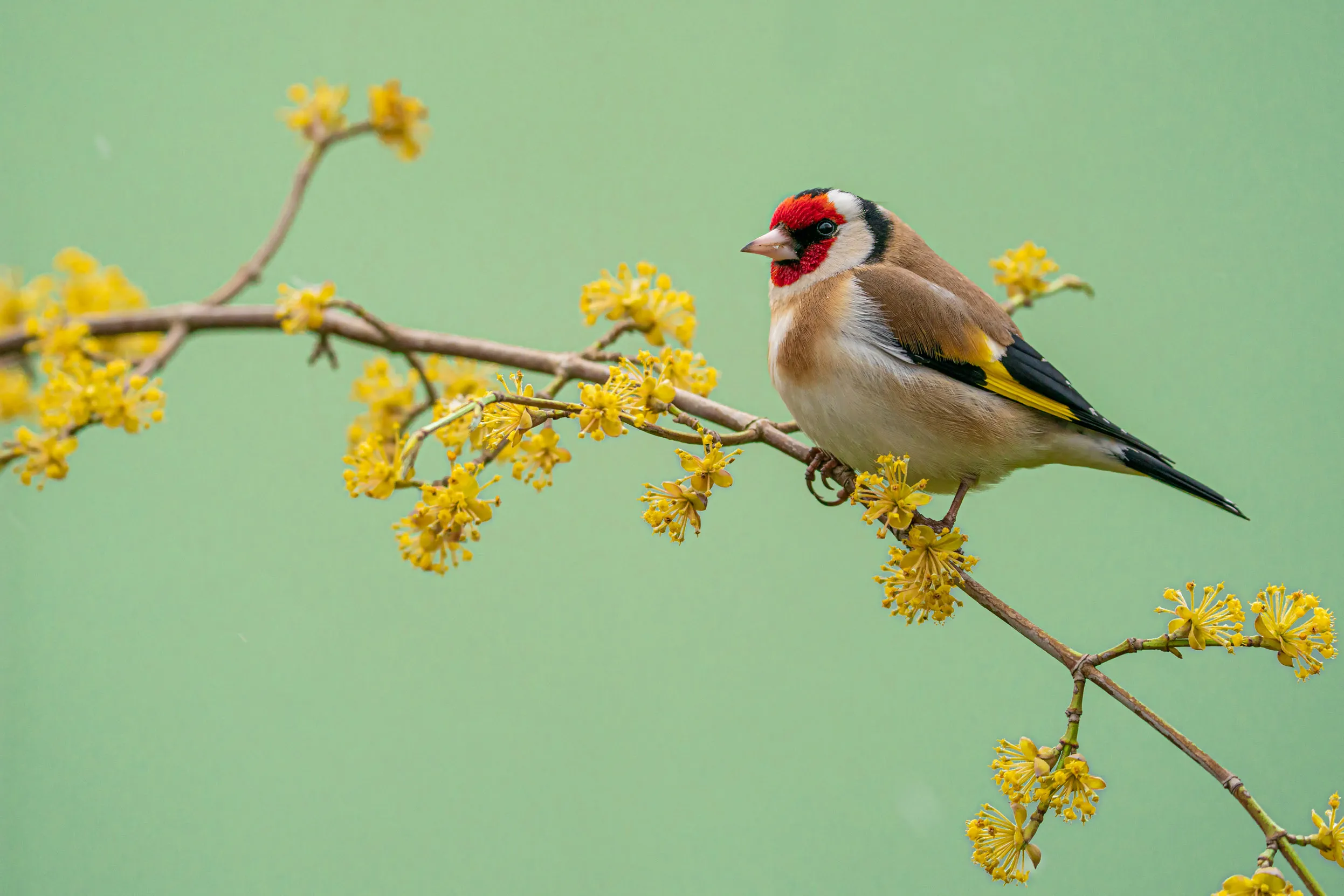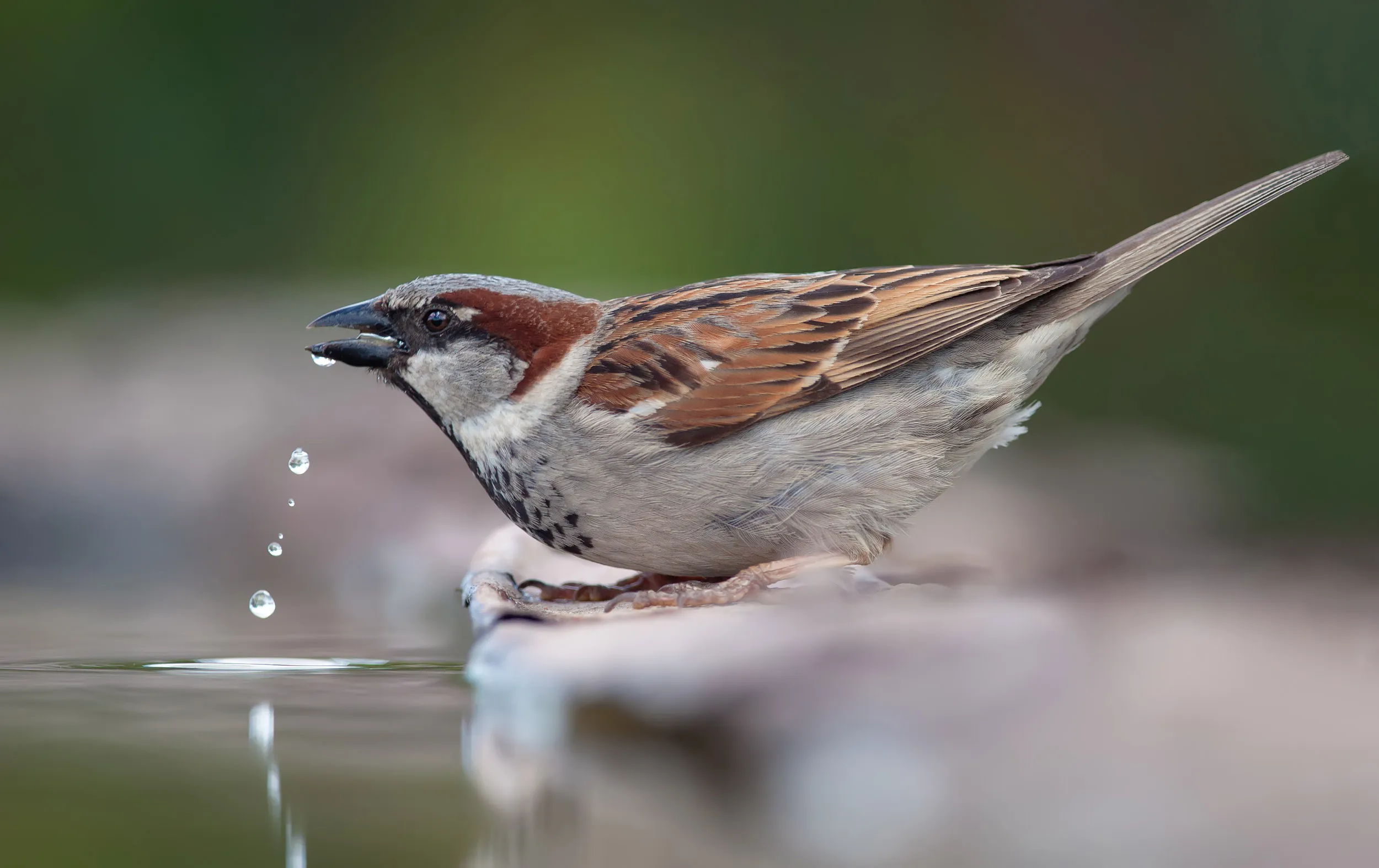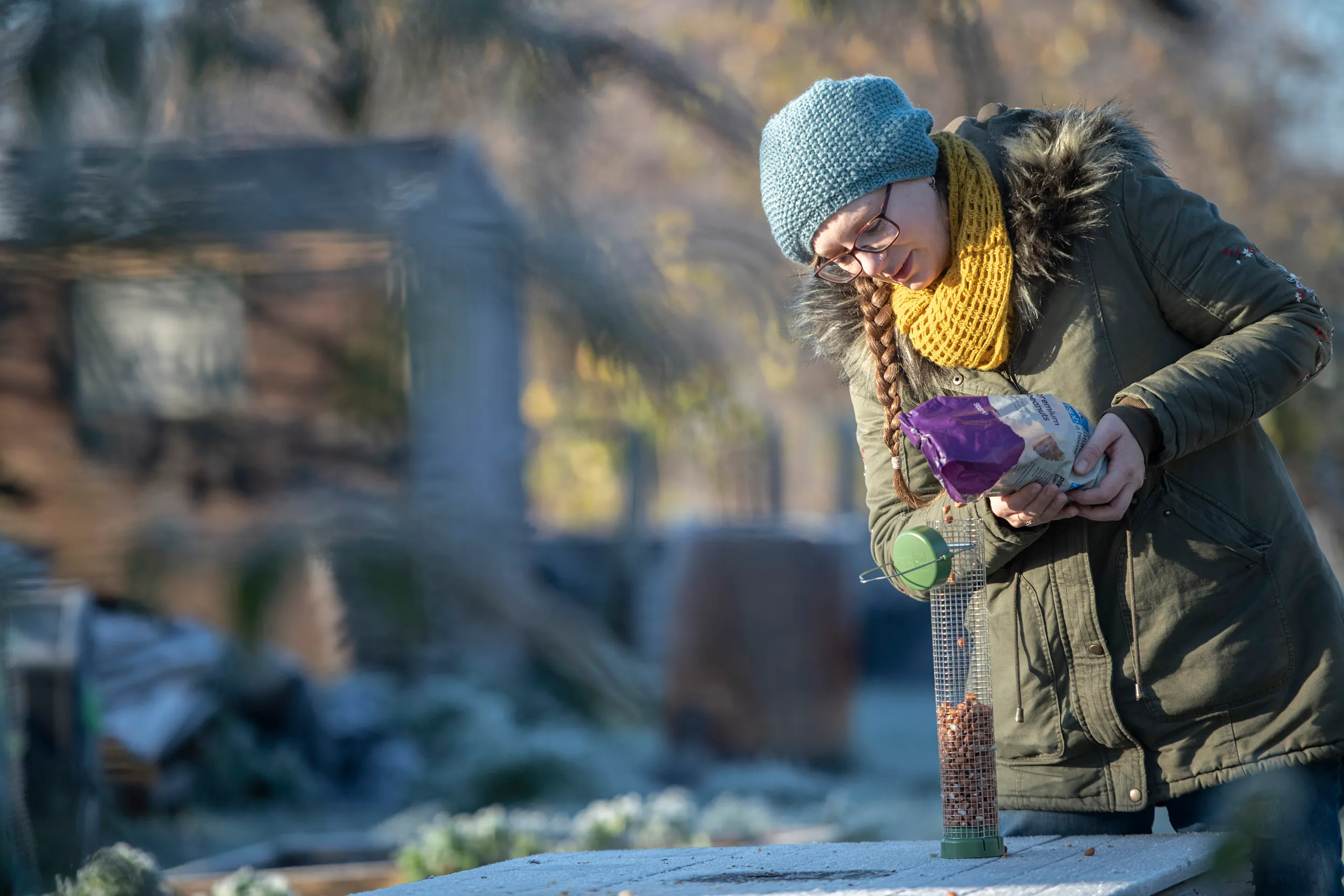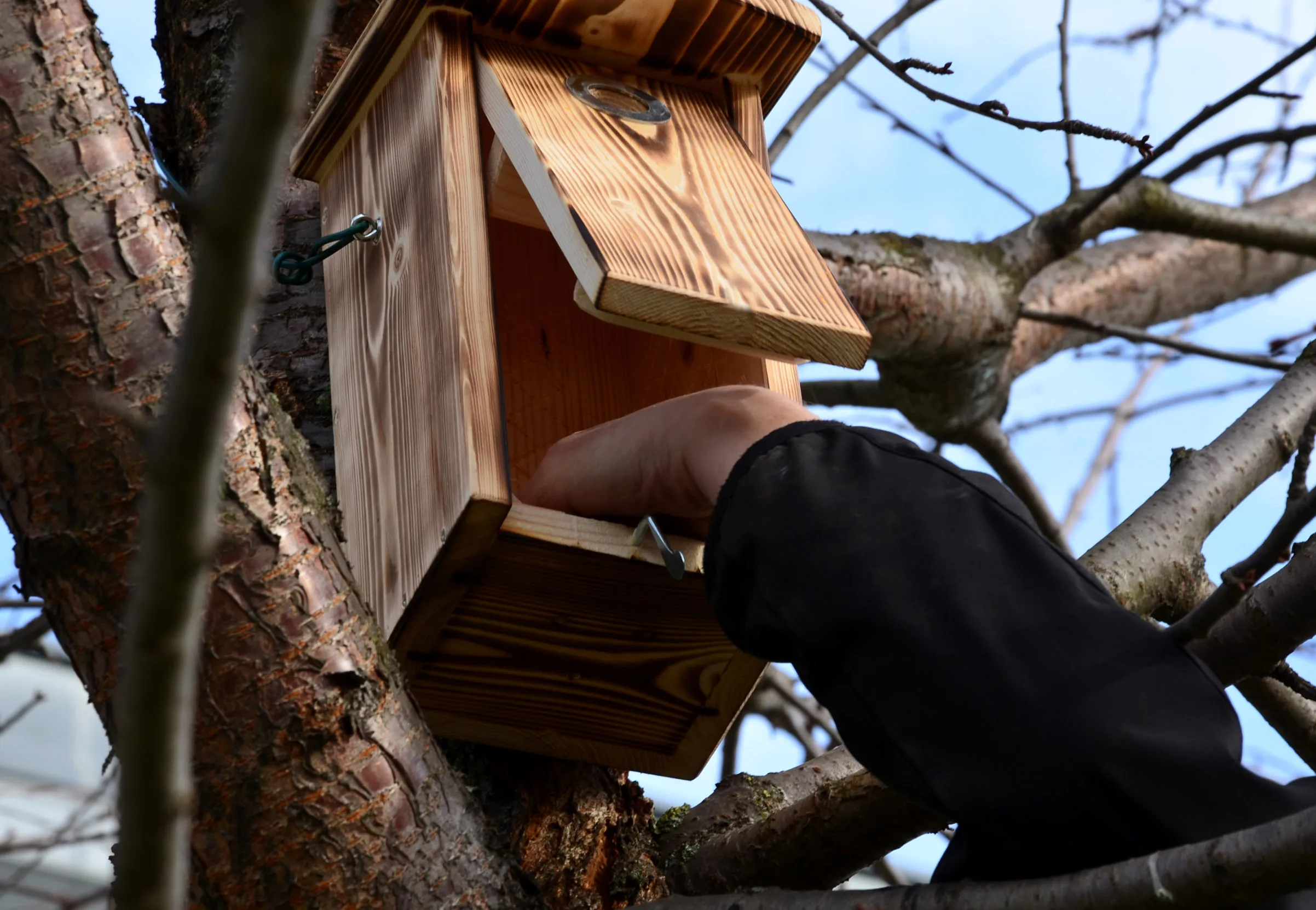Advice
Other ways to fundraise
Run, walk, cycle, bake or sell for nature. Whether you're a hare or a tortoise we'd love you to support the RSPB as you ...
Advice from the wildlife team on looking after your local feathered friends. From the best bird tables to helping prevent injuries and attacks.

When do birds use bird tables?
A bird table will be at its most popular when natural food is in short supply, usually between October and April. But food shortages can happen at any time, so feeding all year round is best.
When you choose a bird table, consider:
Size – 3-4 square feet is ideal.
Material – Wood may look most natural, but metal, plastic and polycarbonate may be easier to clean.
The post – The smoother and straighter the post, the harder it is for cats and squirrels to climb.
Safety – Check there are no sharp edges, or moving joints in which a bird could be trapped.
Design – A basic platform with edges and drainage channels with or without a roof is by far the best.
The birds you want to attract – An adjustable table will help make sure smaller birds get a look-in.
You don't have to have a garden – a feeding tray can attract birds to a balcony or a windowsill, even on a block of flats.
Place feeders where the birds are safe and able to eat undisturbed – ideally away from fences or dense hedges, where cats can easily get to them. If there’s a small bush nearby, birds can use this as a look-out point.
When buying bird food, try to get a good mix of peanuts, seeds and live food like mealworms and waxworms. Fruit, especially bruised apples and pears, will be popular with thrushes and Blackbirds. Household scraps like pastry, cooked rice and breadcrumbs should only be offered in small amounts occasionally.

Bird table and feeder hygiene is very important. Brush off debris every time you put out fresh food and scrub the table with a mild disinfectant solution weekly. Move the table from time to time to stop droppings building up underneath. Water containers should be rinsed out daily, especially during the warmer months, and allowed to dry out before fresh water is added.
If you see a sick bird on your feeders, stop feeding altogether, thoroughly clean your feeders and store away from the garden (e.g. in the garage or shed). Only resume feeding after 2-4 weeks, but stop and repeat the process if you see any more sick birds.
Some bird diseases can infect people. The risk is small, but precautions are worth taking. Wear gloves and thoroughly wash your hands after cleaning bird baths and bird tables. Clean feeders outside with separate utensils.

It’s good to provide a regular supply of clean water for birds. It’s particularly important in the winter and in dry weather. Shallow containers, like dustbin lids or plant saucers, work well, but make sure you clean them regularly.

Strong chilli powder or pepper sauce (like Tabasco) can be shaken onto bird food. Birds aren't bothered by the chilli, but most squirrels can't put up with the burning sensation and will leave the food alone.
Although unsightly, 1.5" (4 cm) wire mesh around the table can stop squirrels and cats, but it will also keep away larger birds. Or, try an inverted biscuit tin fixed at the top of the post supporting the table.
You could also try plastic bottles, fixed so they revolve, slipped along the post, or one of the available squirrel deterrents or baffles from our shop.
Scent deterrents can work well for cats. You could try using Citronella, Citrus fruit peel or Silent Roar cat repellent around your garden.

Put out bird food and water on a regular basis through autumn and winter. In severe weather, you may find you need to feed twice daily. Birds need high-energy, high-fat foods during cold weather.
Always adjust the quantity given to the demand, and never allow uneaten foods to build up. Once you have a feeding routine, try not to change it as birds will become used to it.
During the spring and summer months, birds also require high-protein foods, especially while they’re moulting. Be careful with peanuts, fat and bread during spring and summer. If you want to feed peanuts only do so in rigid mesh feeders that will not allow sizeable pieces to be removed, since these could be a choking hazard to chicks. Home-made fat balls can melt in warm summer weather, and should be avoided. Shop-bought fat bars can be used, but throw away any leftovers after three weeks.
Browse our online shop and discover a wide selection of good quality bird foods.

Give birds a nest box and keep them coming back to your garden year after year. If you want to see the chicks as they grow, you could fit a nest box camera before the breeding season starts.
Browse our selection of nestboxes on the RSPB shop.
We recommend that nestboxes are cleaned and old nests removed in the autumn. Ideally, do this from September onwards, but make sure the nest is no longer active – some species can nest right through September.
Always wear gloves while cleaning nestboxes or bird feeders. Take the box down and empty out the nest material. Any unhatched eggs can only be removed legally between September and January (August-January if you're in Scotland), and must then be disposed of. It is quite normal for a few eggs to fail to hatch, or for some young to die.
Use boiling water to kill any remaining parasites, and let the box dry out thoroughly. Don’t use insecticides or flea treatments – these could be harmful to chicks.
If you place a small handful of clean hay or wood shavings (not straw) in the box once it's totally dry after cleaning, small mammals may hibernate there, or birds may use it as a roost site. Then, replace the lid and re-hang, ready for next year.
Natural nest holes aren’t cleaned, so it’s not the end of the world. As it gets close to spring, it’s best to leave nextboxes be so as not to disturb the birds. Wait until the end of the nesting season and do an annual autumn clean.

You don’t have to do anything about a bird nest in your roof. Many birds use roof spaces for nesting and usually don’t do any harm. All wild birds and their active nests are protected by law, making it illegal to remove or block off an active nest.
Learn more about what to do if you have birds nesting in your roof.
Almost certainly no. All birds their nests and eggs are protected by law: the Wildlife & Countryside Act of 1981. This makes it illegal, with certain exceptions, to deliberately take, damage or destroy the nest of any wild bird while it is in use or being built. It is also illegal to take or destroy the egg of any wild bird.
Cutting back shrubs is best left until autumn and winter, unless you're absolutely sure that birds aren’t nesting there. Hedges and some shrubs also offer berries to birds in winter, so consider pruning and trimming after they’ve been eaten.